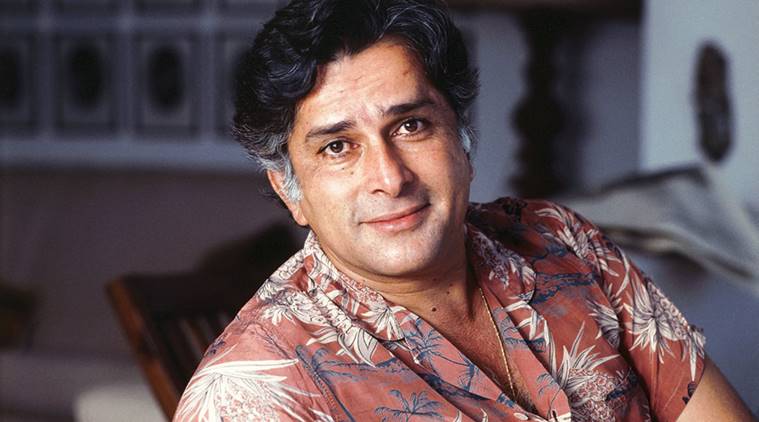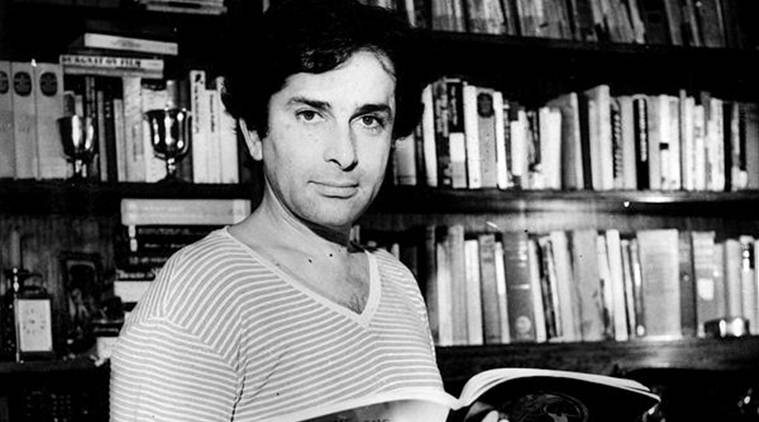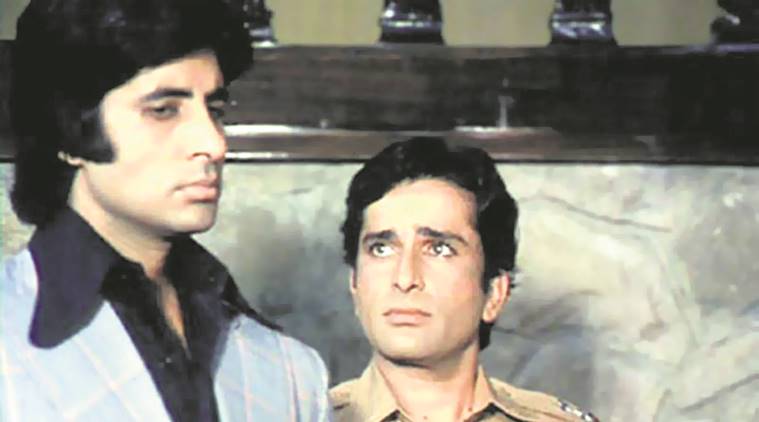
Most Kapoors have a definitive image by which they are known. Either fans and critics are responsible for it, or the stars themselves, that’s a curious alchemy we will never know. So, Prithviraj Kapoor is etched in public memory as a strongman of historical epics (thanks, but no thanks to Sikandar and Mughal-E-Azam). His son Raj Kapoor is the ultimate showman, the Tramp, tormentor of women in sensuous whites and cinematic voyeur. With his famous cry of ‘Yahoo’, as he rolled down a snow-capped mountain, debonair Shammi Kapoor redefined romance — wilder, the better. With his chocolate boy looks, Rishi Kapoor will forever remain a teenybopper heartthrob. Where does Shashi Kapoor fit into the K-family arc, and by that we also mean the history of Bollywood? The history of Hindi cinema is a Kapoor male festival, after all.
When Shashi Kapoor died at 79, in 2017 after a prolonged battle with liver cirrhosis, obituaries after obituaries described him as a popular romantic lead. So, like other Kapoors, his overall image was that of a romantic star. But he was much more than just a pretty face with a winsome smile. Indeed, he did have a way with romance. Now, he might not have the booming baritone of Prithviraj Kapoor, neither was he the coy and nervous country bumpkin in the mould of Raj Kapoor. He certainly lacked Shammi Kapoor’s wild and free-flowing style. Shashi Kapoor’s approach to romance was more gentlemanly and muted in its essence, which perhaps may have led him to acquire the ‘most underrated Kapoor’ tag. It is a misleading tag, for how can you call someone unsung who, when at his peak in the 1970s was just as popular as Raj or Shammi Kapoor may have been at theirs? For today’s readers, you can imagine him being in the same high pedestal as Ranbir Kapoor is today, with hits like Sanju, Ae Dil Hai Mushkil, Rockstar and Barfi! under his belt.
Born to Act

Being born into the Kapoor family was to be born to act. In young Shashi Kapoor’s case, he was a superstar-in-the-making. With Prithviraj as a father and Raj Kapoor as elder brother, Kapoor wouldn’t have needed much convincing to face the camera. Like most Kapoors, he wasn’t highly educated and in fact, wore that as a badge of honour. His film schooling began under the watchful eye of the father and the father-like elder brother. You can see him as a young child in 1951’s Awara being teased by a neighborhood bully as a “chhokri” (girlish). Grown up, the same soft-boy looks that were mocked in Awara would be highly prized in a string of romantic comedies from late 1960s onwards. Come the 1970s and Shashi Kapoor is a craze among female audiences.
A decade later, after his stint as a child star, Kapoor entered Bollywood as a leading man. Yash Chopra’s Dharmputra (1961) was hardly the kind of film you’d expect this handsome Kapoor to opt for as his adult debut. But in choosing Dharmputra, Shashi Kapoor proved himself as someone who loved cinema and acting way too intensely and one who least bothered about fame and money. The risk didn’t pay off. Playing a Muslim-hating radical belonging to the right-wing, Kapoor’s Dharmputra, with its socially aware theme, unconventional plot and a shock ending was too much to handle for an audience that was revelling in the light-hearted Dev Anand romps and Dilip Kumar tragedies. Incidentally, 1961 was the same year when Shammi Kapoor flung the rulebook out the window with Junglee, unleashing a new moral code for the youth. And here was Shashi, taking tentative steps into filmdom, with a brave, if high-risk film that wore its politics on its sleeve. All of Kapoor’s early films, including one by auteur Bimal Roy, tanked. “I became a jinx,” Kapoor reflected, years later. “Producers cancelled my roles. ‘Shashi Kapoor nahin chalega (he won’t sell)’, they said and took back the signing amount,” he told journalist Madhu Jain in her tome ‘Kapoors: The First Family of Indian Cinema.’
1965’s Jab Jab Phool Khile, in which he somewhat entered into the Shammi Kapoor territory with its exotic Kashmir setting and chartbuster music, finally broke that jinx. Shammi Kapoor had made the embarrassing act of falling into the shikara-filled Dal Lake cool. Jab Jab Phool Khile is a film that could have been written for Shammi if only the scriptwriters had reversed the plot. Here, Shashi plays a poor guy, who rents his houseboat to a rich girl (Nanda). In sharp contrast, Shammi’s Kashmir hits usually features him as a rich brat falling for the village belle. Cue: Kashmir Ki Kali. Meanwhile, Jab Jab Phool Khile gave a down-and-out Shashi a much-needed hit – and also the lucky charm Nanda, with whom he struck a popular romantic pairing.
Contrary to dancing star Shammi Kapoor’s melodramatic flamboyance, Kapoor’s romance was too subtle, refusing to scream its lungs out, though he had done his fair share of jumping and hooting in the high-energy song “Affoo khuda” from Jab Jab Phool Khile (subject of a homage in Shah Rukh Khan’s recent Zero).
The Second Hero

By the 1970s, Kapoor co-starred in a string of commercial hits with Amitabh Bachchan (Deewaar, Trishul, Suhaag, Shaan, Kabhi Kabhie and Silsila), often as a second fiddle to the angry young man. The catchphrase “Mere paas maa hai”, a pithy Salim-Javed creation mouthed by model cop/son/human Ravi (Shashi Kapoor) in a confrontation scene with screen brother (Bachchan, led astray into the world of crime) in Deewaar, has since passed into pop culture. Sometimes, Kapoor is not given due credit for bringing these masala entertainers alive with his magnetic screen presence as the focus tends to rest mostly on Bachchan. In truth, Bachchan was a bigger star but Shashi, despite the second billing, imbued his performances with a sincerity and charm that directors like Yash Chopra, Ramesh Sippy, Prakash Mehra and Manmohan Desai would have found lacking in others. Then, there was also the question of which bona fide big star would willingly concede to a second-rung role opposite Bachchan, billed as the one-man industry those days? Actors like Shashi, Rishi Kapoor and Vinod Khanna did that, with aplomb and an inner confidence that their turn would not go unnoticed.
And it didn’t. On his passing, Amitabh Bachchan with whom he had formed a lifelong friendship, wrote on his blog, “He fondly addressed me as ‘babbua’… and with him have gone many incredible unread chapters of his and my life.”
Hollywood Innings
What also stands out in Shashi Kapoor’s distinguished career is his push for the alternative cinema as he bankrolled the 1970s parallel cinema classics, making possible such gems as Junoon, Kalyug, Utsav and 36 Chowringhee Lane. Straddling the two worlds, of Yash Chopra and Shyam Benegal, he also found time to work closely with Hollywood’s James Ivory and Ismail Merchant. He did his first film with them, the English language B&W The Householder, way back in 1963 and that was the beginning of a long collaboration that also included Shakespeare Wallah, Sammy and Rosie Get Laid and Heat and Dust. In the Merchant-Ivory cinematic universe, he was a teacher and playboy one day and a Bollywood actor and a Nawab the next. One of Kapoor’s most memorable late-career performances was also in an Ivory-Merchant production. In Custody (1993), based on Anita Desai’s novel, sees him as a debauched Urdu poet from Bhopal, a corpulent shadow of his rich past — a metaphor for the crumbling traditions of the Urdu language itself. Nur (Kapoor) is torn between his two wives, a larger number of groupies sticking to him like houseflies and a genuine admirer, a Hindi professor (Om Puri) tasked to chronicle the great man’s life for a periodical. It is a dense role and Kapoor leads from the front, by turns painting a picture of Nur as a figure of admiration and pity. This legendary poet who could have been in contention for a Nobel Prize is all liquored up basking in the reflected glory, instead. Fed on glutton and fond of his drink, the Falstaffian Nur reminds you of the many late-age Kapoor men, from Prithviraj and Raj down to Shammi Kapoor.
In Custody was directed by Ismail Merchant, with whom Shashi had first worked in The Householder. It was on The Householder that Shashi is believed to have met his future wife Jennifer Kendal, a real-life romance that would change his life. She inspired his commitment to theatre, a legacy continued even today at Mumbai’s Prithvi Theatre which serves as an incubator for stage talent. He was cast opposite Jennifer’s svelte sister Felicity Kendal in The Householder, as a suave charmer. At one point, he loses his mind when an unruly patron molests his lady love during a performance. A few scenes later, badly bruised, Kapoor’s Sanju tells Felicity in a tense moment that he couldn’t have just stood there while she was being abused. Invoking the Indian word ‘izzat’ (honour), Sanju rants, “When a creature like that whistles at you it’s against my izzat.”
Izzat. Honour. You could use the exact same words to sum up this thespian’s life and career.
(Shaikh Ayaz is a writer and journalist based in Mumbai)